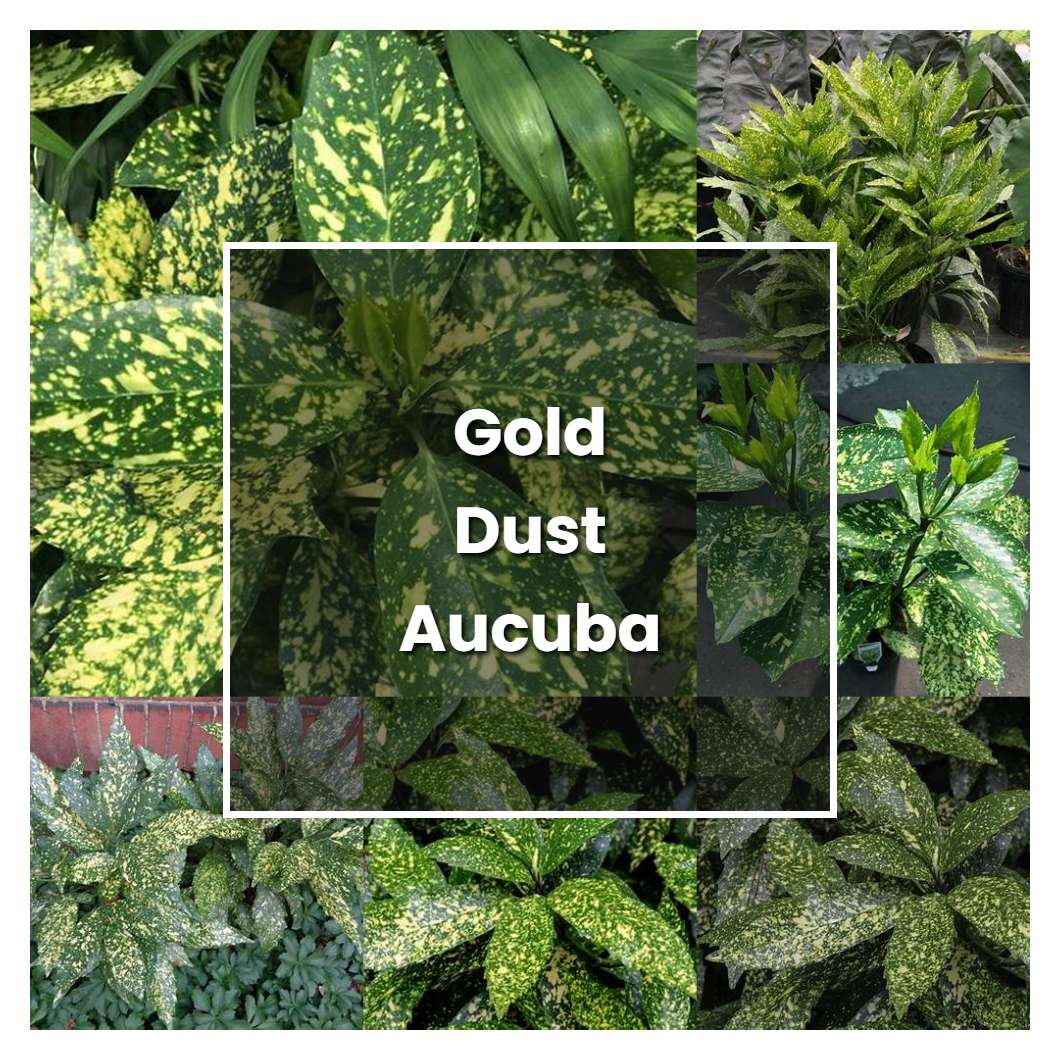Gold dust aucuba is an evergreen shrub that is native to China and Japan. It is often used as a hedge or foundation plant in landscaping. The leaves of this plant are variable in shape and size, but typically have a dark green color with gold or yellow spots. The flowers are small and white, and the fruit is a red berry.

Related plant:
Physocarpus Opulifolius Darts Gold
Related plant:
Potentilla Goldfinger
About soil condition, gold dust aucuba prefers soil that is well-drained but moisture retentive. It will also tolerate a wide range of pH levels, from acidic to alkaline. This plant is not particular about soil type, as long as it is not waterlogged.
Like the other Aucuba species, the Gold Dust Aucuba is tolerant of low light conditions and will even do well in shade. However, if you want your plant to really thrive, it's best to give it some sun. Place it in an area that gets bright indirect light for best results.
The temperature condition required for gold dust aucuba to thrive is between 55 and 80 degrees Fahrenheit. They preferpartial sun to partial shade, and will do well in both indoor and outdoor settings. Avoid placing them in direct sunlight, as this can cause the leaves to scorch.Water them regularly, making sure to keep the soil moist but not soggy. Fertilize monthly during the growing season.
Ideal humidity condition for this plant is between 40-60%. Above or below this range can negatively affect the plant. Too much humidity can lead to powdery mildew or other diseases, while too little humidity can cause the leaves to become dry and brown.
Mentioning fertilizer, this type of plant does not require high levels of nutrients in order to remain healthy. A moderate feeding of a balanced fertilizer will provide just the right amount of nourishment for your Gold Dust Aucuba. It is best to apply fertilizer to the soil around your plant during the springtime, and then again in the fall. As for watering, the Gold Dust Aucuba does best when the roots are allowed to dry out slightly between watering.
Pruning your gold dust aucuba is important to encourage new growth and to keep your plant looking its best. You can prune your aucuba any time of year, but late winter or early spring is best. To prune, simply cut back any leggy or overgrown branches. You can also cut back the plant to encourage bushier growth.
Propagation is best done by rooting stem cuttings taken in late spring or early summer. Select healthy, disease-free plant material and take 4- to 6-inch-long cuttings from young, actively growing stems. Dip the cut surface in rooting hormone, then plant in moistened, well-drained potting mix. Place the pot in a shady location and keep the soil moist but not soggy. Rooting should occur in 4 to 6 weeks. Once rooted, transplants can be moved to a sunny location.
Usually, the plant growth rate is rapid during the first 2 to 3 years after planting. Thereafter, growth slows somewhat, but the plant continues to increase in size for many years. Gold dust aucuba is an evergreen shrub that may eventually reach a height of 10 feet or more, although it is usually much smaller. This plant grows well in full sun or partial shade and is tolerant of a wide range of soil types.
Common problems for this kind of plant are leaf spots, powdery mildew, root rot, and stem cankers. These problems are caused by different fungi and bacteria. Leaf spots are the most common problem and are caused by different fungi. They can be prevented by keeping the leaves dry and by not overcrowding the plant. Powdery mildew is caused by a fungus and can be prevented by keeping the leaves dry and by not overcrowding the plant. Root rot is caused by different fungi and can be prevented by planting the plant in well-drained soil. Stem cankers are caused by different fungi and can be prevented by pruning out the affected parts of the plant.
Source:
Gold-dust Plant (Aucuba japonica 'Vaiegata')
Sprinkle Gold Dust aucuba in landscapes - Mississippi State
Aucuba japonica var 'Variegata': Gold Dust Aucuba - LSU
